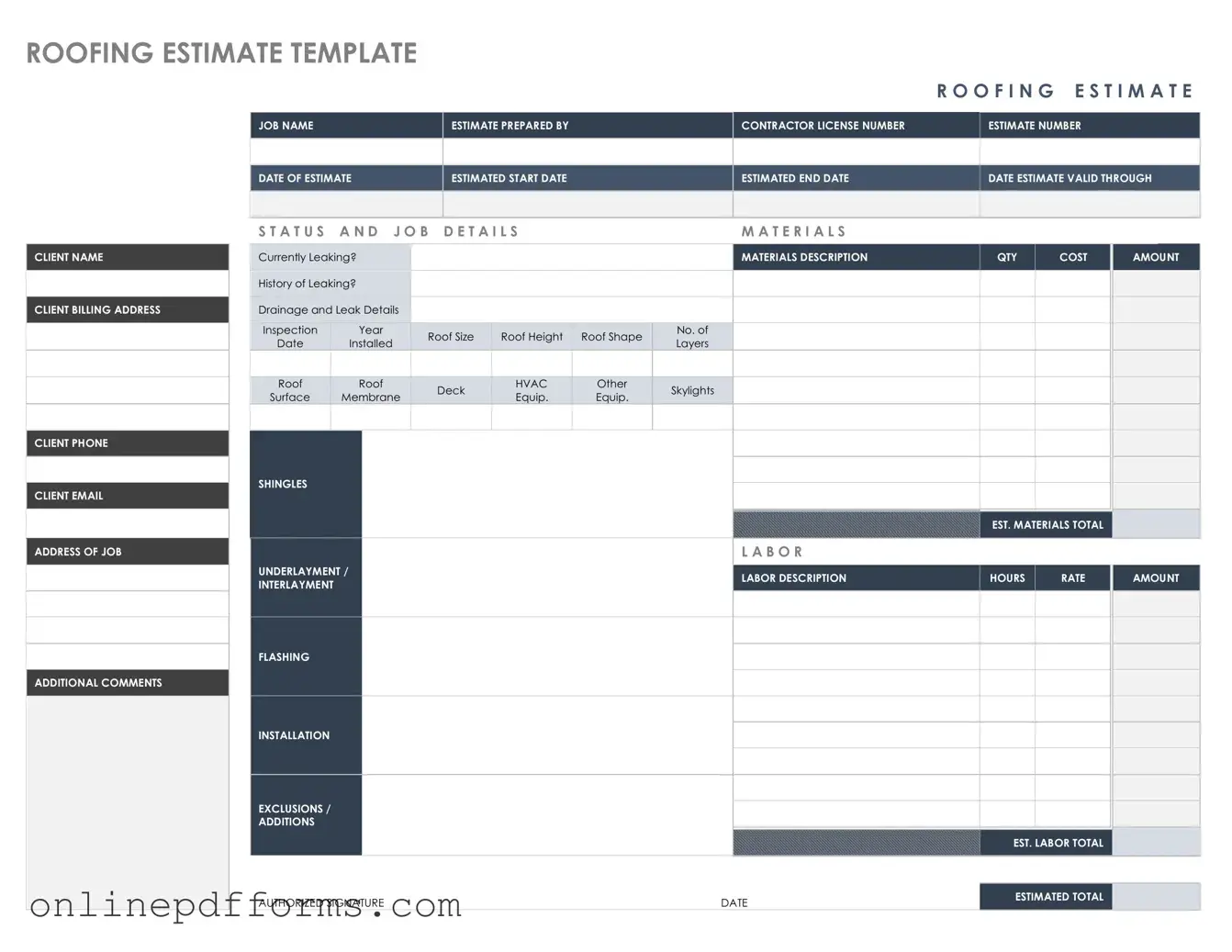The Roofing Contract is closely related to the Roofing Estimate form. Both documents outline the scope of work to be performed on a roofing project. However, while the estimate provides a preliminary cost and details of the proposed work, the contract formalizes the agreement between the homeowner and the contractor. It includes terms and conditions, payment schedules, and timelines, ensuring both parties have a clear understanding of their responsibilities and expectations.
When navigating contracts and estimates, it is essential to utilize reputable resources to ensure compliance and clarity. For instance, the California Independent Contractor Agreement can be accessed at californiapdf.com, which provides a comprehensive framework for independent contractors in California. Understanding these documents not only enhances professionalism but also establishes a solid foundation for fruitful working relationships, minimizing the risk of misunderstandings.
The Work Order is another document that shares similarities with the Roofing Estimate form. Like the estimate, a work order specifies the tasks to be completed, but it is often used after the estimate has been accepted. The work order serves as a confirmation of the job details and can include specific instructions or modifications agreed upon by both parties. This document helps to ensure that the work aligns with the initial estimate and any subsequent discussions.
The Invoice is also comparable to the Roofing Estimate form, although it serves a different purpose. An invoice is issued after the work is completed and details the final charges for the services rendered. It may reference the original estimate but reflects any changes in scope, additional work, or materials used. This document is essential for the homeowner to understand their financial obligation and for the contractor to receive payment for their services.
Lastly, the Change Order is another document that relates to the Roofing Estimate form. A change order is used when alterations to the original scope of work are needed after the estimate has been provided. This document outlines the specific changes, any additional costs, and adjustments to the timeline. By documenting these changes, both the homeowner and contractor can maintain clarity and agreement throughout the roofing project.
